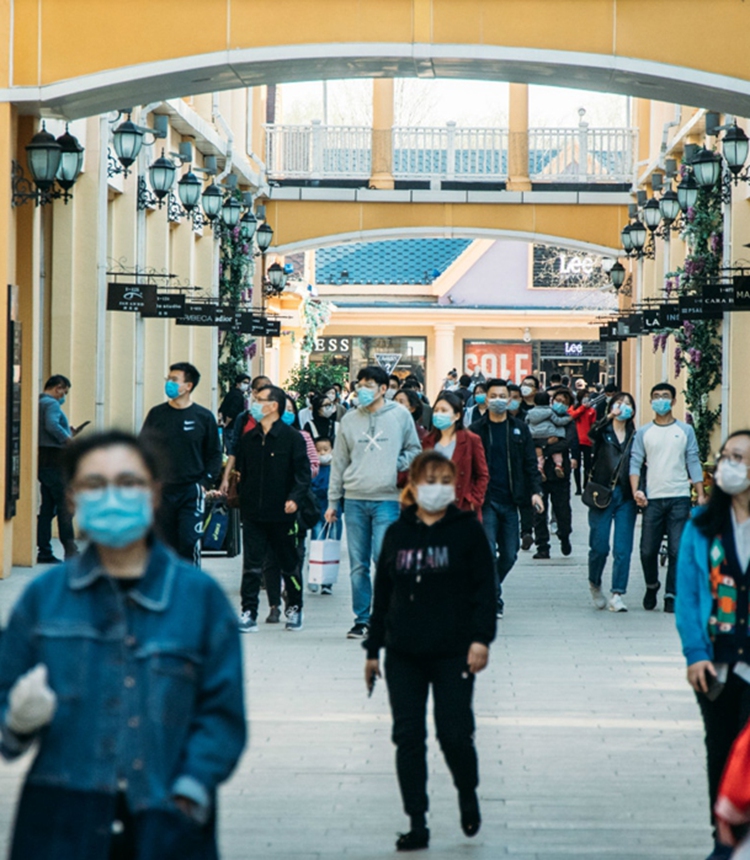Beijing and Wuhan, Central China's Hubei Province, will rebuild their public health emergency response systems over the next three years and improve their monitoring mechanisms for diseases of unknown causes. Experts called for the rebuilding to expand to a national scale to better safeguard people's health and safety.

People visit Qianmen Street in Beijing, capital of China, June 3, 2020.(Photo:Xinhua)
Beijing's plan was announced by the municipal government at a meeting on Tuesday, while the Wuhan government proposed its plan in a document drafted on Monday.
Reconstruction of the public health emergency response system has been a hot topic in China since the COVID-19 outbreak eased. During the Two Sessions held in May, the most important political events in the country, Chinese policymakers called for a reform of the public health system, especially emergency warnings for infectious diseases.
"The reconstruction of the public health emergency response system can fill the loopholes and fix the problems shown in the fight against the COVID-19 epidemic. Such loophole-driven reconstruction will ultimately make the country able to cope with any severe contagious disease, from the local to the national level, in a proper and timely manner," Wei Aimin, a Beijing-based lawyer and deputy of Beijing Municipal People's Congress, told the Global Times on Tuesday.
Beijing as the capital and Wuhan as the city hit hardest by the virus are taking the lead in enhancing the capacity of their public health emergency responses to epidemics.
The cities' three-year plans both have two parts: utilizing public health monitoring systems and expanding medical resources to accommodate and treat patients suspected of having or being diagnosed with infectious diseases.
To achieve multi-level, real-time and dynamic monitoring of potential or confirmed epidemic patients, an intelligent monitoring system equipped with big data analysis and emergency warning functions will be established in key places such as hospitals, pharmacies, third-party testing agencies and community health centers.
A range of measures were proposed in their plans aimed at improving the capacity to handle epidemics, including increasing the number of infectious disease hospitals, having public buildings ready to be converted into temporary hospitals or isolation sites in the event of an emergency, and strengthening the ability of medical staff to prevent and treat infectious diseases.
Wei said that the expansion of cities' medical resources in response to emergency public health events is of great importance because the lack of hospital wards, isolation sites, protection masks and gear, and infectious disease specialists that China encountered amid the COVID-19 outbreak greatly increased the difficulty for the country in tackling the epidemic.
Wei noted that the establishment of public health emergency response systems should not be limited to the two cities, but should be a national plan that needs close cooperation among cities and departments to ensure the comprehensive prevention and control of public health emergency events.
In Wuhan's plan, the city will expand Jinyintan Hospital and Wuhan Pulmonary Hospital, two front-line hospitals that treated a large number of COVID-19 patients, and build new infectious disease hospitals in the Wuchang and Hanyang districts.
Also, 16 key hospitals in Wuhan will establish or renovate independent infectious disease zones or wards.
Beijing plans to further improve the layout of its "3+2" infectious disease hospitals: three key infectious disease specialized hospitals on the front line, one alternative hospital for foreign patients, plus the Xiaotangshan hospital as a backup base.
The city will also increase the total number of negative-pressure hospital wards to 700 and ensure a sufficient amount of necessary medical supplies by the end of 2022, which will meet the requirements for a public health emergency response for at least 30 days.


